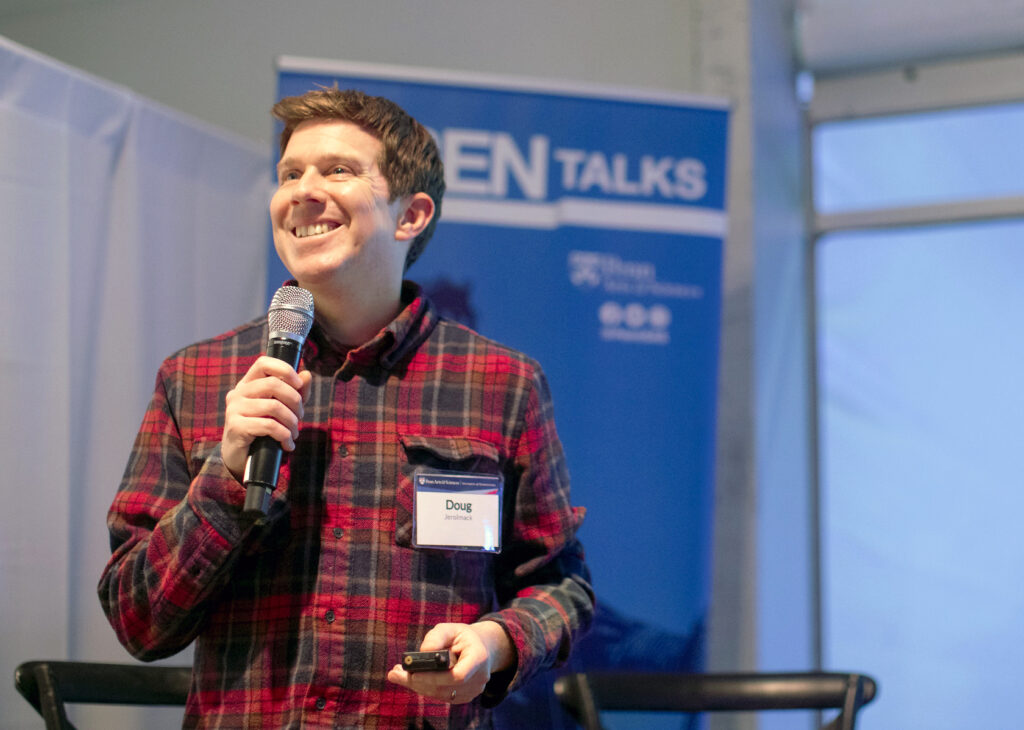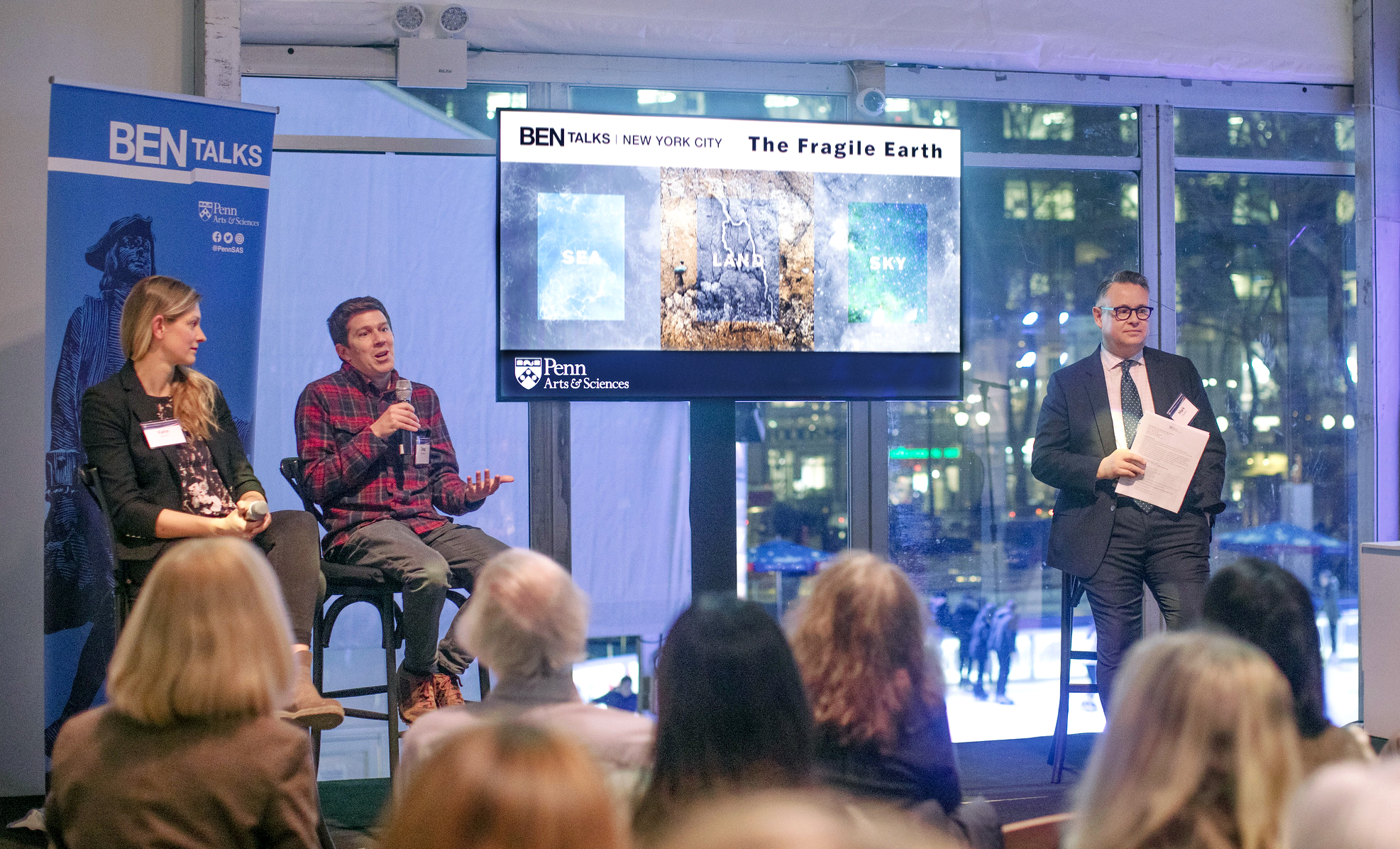Written for OMNIA by Michele W. Berger
Photos by Brooke Sietinsons
On a brisk night in January overlooking the skating rink in New York’s Bryant Park, alumni took a journey from the depths of the sea to the outer reaches of space, as part of the annual Ben Talks NYC, a series that began nearly a decade ago.
This year’s event offered conversation from three Penn scientists on where the planet has been and where it’s going. Katie Barott, Assistant Professor of Biology, spoke about her research on coral reefs. Doug Jerolmack, Professor of Earth and Environmental Science and Mechanical Engineering and Applied Mechanics, focused on what happens in the places where land meets water or air. And Mark Trodden, Associate Dean for the Natural Sciences and Fay R. and Eugene L. Langberg Professor of Physics, spoke about the accelerating expansion of the universe.
Trodden also moderated the event, which began with an introduction from Dhan Pai, W’83, PAR’12, PAR’15, a member of Penn Arts & Sciences’ Board of Advisors, a University trustee, and one of the program hosts. “The School of Arts & Sciences is the focal point for understanding the changes in the world—scientific, political, historical, or otherwise. And the inquiry that happens within SAS allows us to better understand humanity, its role, and our impact on the world today,” he said. “Tonight, we’re actually going to cover the world … from the oceans to the land to space.”

After Barott, Jerolmack took his turn. “When a geologist looks at planet Earth,” he said, “they strip away the ocean, they strip away all the life, they strip away all that stuff because of course, all of that is a thin little layer on the surface of a planet.” What he and scientists in his field home in on are the solid materials on the Earth’s surface. “What we see,” he added, “is that everything is fractured.”
The fractures aren’t random, however, but form patterns: T junctions when the cracks come together, X junctions when they cross. Continually stress materials with a few small cracks, and those join to create larger ones. “Consider mud cracks as a model system,” Jerolmack said. “The fractures appear somewhat random, but their geometry betrays an underlying order. In the beginning a few large cracks appear. Under continued drying, however, newer cracks connect to old ones and form telltale T junctions.”
Ice does something different, something special, he said. “If you crack ice, it’ll make a few long cracks, but if you keep cracking it, instead of making Ts, new cracks just run right over old cracks as if they weren’t there.” This happens because ice heals, whether from water dripping down from above or being pulled up from below, or even just from vapor deposited from the atmosphere. Because cracks heal, he added, sequential cracks run through them, and consequently, fractured ice forms conspicuous X junctions.
The signature of fracture mechanisms that are encoded in geometry can help to understand the fragility and resilience of glaciers and other materials on Earth and can reveal the role of water in shaping other planets like Mars, not only the presence of water, but even whether past environments cycled between wet and dry. “The idea now is that we can potentially map the habitability of worlds just by counting cracks,” Jerolmack said. “What drives us to explore other planets is a search for life, so we can ultimately understand who we are, where we came from, and under what conditions life emerges.”
You can read the full article at OMNIA.

